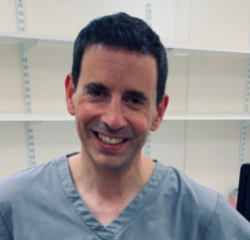
There is currently a spotlight on the provision of diagnostic testing within healthcare that has not been seen before. Within this conversation echocardiography is rightly gaining its fair share of attention and anybody whose work involves interaction with the procedure is only too aware of the enormous pressures being experienced.
To obtain a rounded oversight of the current national provision of echocardiography the British Society of Echocardiography has undertaken a ‘Survey of the Echocardiography Workforce in the United Kingdom’. Every centre which performs echocardiography across the UK was invited to respond. Within England centres were contacted if they were registered under the DMO1 NHS England central database and centres in the devolved nations were contacted using the BSE network of regional representatives. If you were not asked to be involved and you feel that you work at a centre that should be included in future surveys then please let us know at [email protected].
Survey invitations were sent out to 144 centres with an impressive response rate of 68%. Several points of interest within the responses received are highlighted below.
Workforce understaffing is a critical issue, with both the recruitment and retention of staff being pinch points. Not surprisingly, approximately 10% of the total number of full-time equivalent sonographers comprises locum workforce (in addition to frequent extra locum hours being provided by substantive staff). Furthermore, despite workforce numbers being present on paper, it is clear that a significant ‘rookie factor’ has emerged in several departments as more senior staff have changed jobs or retired during the last few years. This inexperience is of particular concern given the safety critical environment that is inherent to echocardiography. Whilst we need to encourage more trainees, we must also acknowledge the additional workload involved in training teams and balance that against the requirement for senior level expertise in the clinical setting.
It was heartening to see some centres embracing the innovative approaches to retaining staff that are being seen in other industries in the post-pandemic recovery (e.g. flexible working based around employee preference or offering a retention bonus) however they are in the minority. It was frustrating to read that several attempts to enhance services and harness the post-graduate, practitioner-level, abilities of colleagues are being held up within internal bureaucratic processes (e.g. delayed at a business case level). It is to be hoped that the increased focus on echocardiography may provide the impetus required to push such initiatives through in the future.
The majority of clinical scientists who undertake echocardiography remain at the Agenda for Change Band 7 pay-scale, a surprising anomaly given the importance of this workforce in not only performing and reporting a key diagnostic test but the frequency with which they will also close off an episode of patient care. If we are to retain this vital group, we must create posts which recognise their experience and expertise, without taking them away from clinical practice.
The growth of echocardiography delivered by both intensive care and emergency medicine colleagues remains strong. However, the provision of an out-of-hours echocardiography service continues to be extremely patchy, particularly outside of cardiac surgical centres, and reliant on an equally stretched cardiologist workforce. Consequently, emergency echocardiography provision is a persistent outlier compared to other life-saving diagnostic tests (e.g. CT/MRI).
Whilst a vast majority of centres offer training for future echocardiographers, the reported dedicated time available for this vital activity is extremely limited. It follows that most training opportunities must fit around service provision; clearly an extreme challenge when tackling the current backlog of requests. This frustration is evident in separate feedback from trainee cardiologists who have been experiencing the same problem from a different angle. The strength of obtaining real-world, frontline data using a national survey cannot be overstated. It is the intention of the BSE to share this snapshot widely; to help influence policy and sharpen focus on the extreme pressures currently being placed upon our membership. Naturally, this is a first stage in what will be an ongoing process of sharing the brilliant work done by our membership whilst also highlighting areas where additional support is badly needed.
Dr Tom Ingram, Chair of Workforce and Leadership, British Society of Echocardiography
Read the report